The Best Guitar Amp Under 1000 from the Top 10 Brands
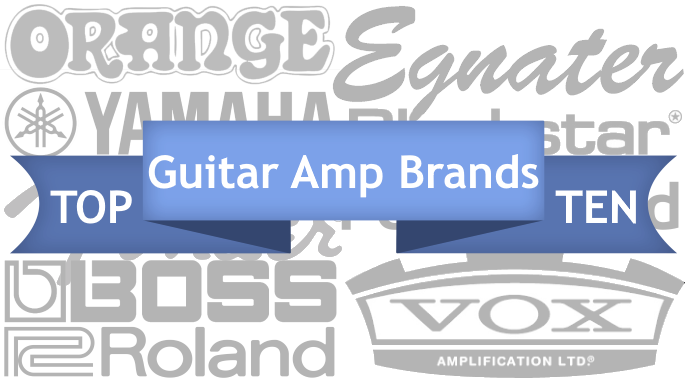
Author & Contributors
Alexander Briones
I have been writing about and researching music gear for many years, all while serving as a music director at my local church. I engage in guitar playing and singer-songwriter stints, in addition to mentoring young musicians and teaching guitar and bass.
The Best Guitar Amps Under 1000 - Highest rated Amp From Each Brand

#1. Positive Grid
Compared to other brands in this list, Positive Grid is a different company altogether, one that develops technology that musicians can use. They first made waves in 2013 with JamUp, a mobile app for practicing guitar. But what really put them on the map was BIAS, a line of software guitar processors that address the needs of home recording setups. They have since expanded into physical hardware with their BIAS technology at the core, releasing Bias Head, Bias rack and Spark guitar amplifiers. Spark in particular is very popular because of its combination of portability and affordability, while retaining high-end guitar processing and auto accompaniment features.
Positive Grid Spark
Cons
- Speakers sound 'muddy' for electric guitar sounds in particular
- Requires Mobile/Tablet for detailed control. No Desktop Software
- Ads for expansion pack in the controls
- Gets so much right that it leaves you wanting even more
Pros
- Great wireless mobile app integration that 'just works'
- Good collection of Amp and Effect Models
- Compact 'Boutique Amp' looks suitable for the home
- Versatility - Stereo Guitar, Bass and Acoustic Amp as well as Bluetooth Speakers
- Excellent Practice Options
Other Positive Grid Amps
The following contains advertising links that will take you to Amazon or Sweetwater: The Spark also comes in a Pearl colored version that comes bundled with a travel bag. They also make a smaller version called Spark Mini, a 10 Watt portable amp that uses similar technology to the Spark.
Drawing from their software based amp modeling expertise, Positive Grid have successfully expanded into the physical amp realm, with amps like the Spark that cater to the needs of home recording enthusiasts.
It comes with built-in DSP that enables it to reproduce the same amp modeling and digital effects as their popular BIAS app. And just like the software, this amp is armed with many good sounding and tweakable presets and parameters that translate well for recording and for practice.
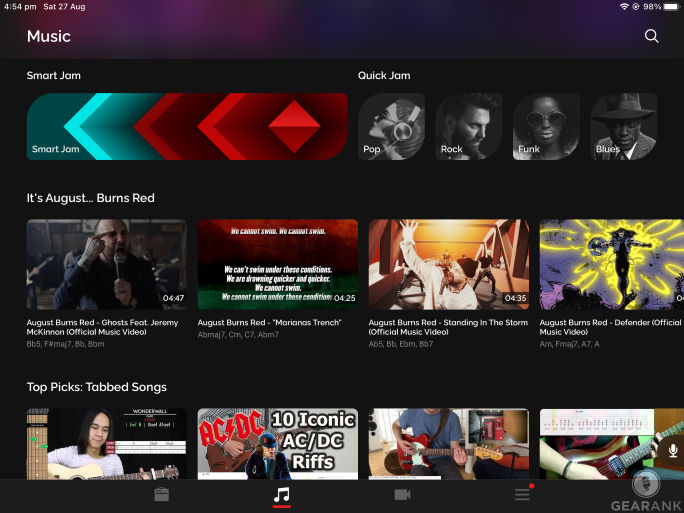
The Spark 40 app's backing tracks and smart jam options
What sets the Spark apart from other desktop amps is its Smart Jam and Auto Chords technology. They've done an amazing job of integrating with YouTube with an integrated player included in the app that has a large collect of pre-existing chord tabs that run alongside the music and video. I didn't come across any YouTube ads which is a handy bonus. For clips that don't have chords already their software automatically analyses the sound on the first run through and produces a tab. For fun I pulled up an old smartphone video of me and a friend at an open mic night playing an original song with less than 50 views on it and sure enough, after the first playthrough it produced an accurate rendering of the chords which is quite impressive. So it will work with basically any music on YouTube including the huge range of tutorials and backing tracks on there. For some popular tunes there are also suggested patches to use from the Tonecloud. The app also integrates with Spotify and Apple Music.

Spark 40 App effects chain.
There's a specific 'Smart Jam' feature where you can play a short chord progression and it will produce an automatic bass and drum accompaniment for you to jam with. I didn't have so much success with this as the chords were too often misread and the backing tracks sounded a bit mediocre. I guess for jamming they'd be Ok but I think this feature still needs some work and others seem to feel the same. I couldn't find any way to manually enter chord progressions with this feature. Rounding out the experience there's a feature that allows you to take a record a video of yourself playing with your own imported music through the amp.

The control knobs on the Spark 40 amp itself.
The Positive Grid Spark is a technology rich amp that is well suited to practice and home recording. Well worth looking into especially if you don't have a table top amp yet.
Specifications
- Power: 40W Class D
- Speaker: 2x4"
- Effects: 30 Amp models, 40 Effects
- Input: 1 x 1/4" (Instrument), 1 x 1/8" (Aux)
- Outputs: 1 x 1/8" (Headphones)
- Weight: 11.46 lbs.
| Website | Source | *Rating Value |
| Gearank | Daniel Barnett | 85/100 |
| Wired | Parker Hall | 80/100 |
| Guitar World | Rob Laing | 100/100 |
Demo

#2. Egnater
This company was founded by Bruce Egnater, one of the pioneers of utilizing two amps to cascade gain. At first he was modding multi-amp setups for himself, but word got out quickly, so he started working with other musicians, and eventually established his own amp brand. Fast forward to today, stacking/cascading gain is now quite common in amps and even guitar pedals, and Egnater continues to utilize this simple yet effective design change in their amps to good effect. Being a smaller company compared to other more established amp brands, Egnater does not have as many different amp models, but the few that they are offering are getting very high ratings from guitarists.
Egnater Tweaker
Cons
- No preset saving and loading
- No channel switching
Pros
- Real tube tone
- Multiple voicings via analog tone stacking
- Expanded tone shaping controls
- Vintage / Modern voicing switch
Other Top Egnater Amps
The following contains advertising links that will take you to Sweetwater.com: The Egnater Tweaker 40 112 combo amp is a well regarded 40-watt option with no need to get a separate speaker cabinet, and then there's the very highly rated Egnater Rebel-30 MKII which is a more powerful tube amp head with 2-channels a lot more in the way of tone control options.
The Egnater Tweaker is a 15-W tube amp head with tone shaping controls aren't normally available in tube amps. It is able to conjure multiple voices via tone stacking analog circuits, instead of going the DSP route.
This means having deep parameter tweaking similar to amp modelers, while retaining real tube circuitry. It can switch between Marshall, Fender or Vox type tones, and this is accompanied by a "vintage / modern" switch which allows the Egnater Tweaker to go from vintage grit to modern high gain - without having to resort to digital technology.
Further tone shaping switches include "normal / bright" and a "tight / deep", both of which expand tone shaping further. And since it uses genuine tubes, it produces convincing amp tones with real tube response and warmth.
Note that the amp's lack of preset control means that there is no way to quickly save or load amp voices. Being a single channel amp also prevents any quick voicing changes - you'll need to dial in parameters manually every-time you want to change the amp's voicing.
While real-time usage is limited, the Egnater Tweaker's voicings and parameter controls make it ideal for recording, since there's no need for quick amp voicing changes when laying down guitar tracks.
Specifications
- Power Rating: 15-Watts
- Preamp Tube(s): 3 x 12AX7
- Poweramp Tube(s): 2 x 6V6
- Effects: None
- Input: 1 x 1/4"
- Outputs: Main Speaker Out, Extension Speaker Out (for a second cabinet)
- Weight: 19.6 lbs
| Website | Source | *Rating Value |
| MusicRadar | Nick Guppy | 100/100 |
| Premier Guitar | Shawn Hammond | 90/100 |
Demo

#3. Vox
Vox's history goes back to the late '40s, where they originally built electronic keyboards. Their presence in the guitar market started in the late '50s when they launched the 15-Watt AC15 amplifier which ultimately caught the attention of many iconic artists - including The Beatles, Queen, Dire Straits, The Yardbirds, The Rolling Stones, The Kinks and many more. These artists helped spread the brand's popularity around the world, but ironically, they were not enough to make the company profitable. This resulted in the Vox brand being owned by many different companies, thankfully Korg took over in 1990 and continues to take good care of the brand up to this day. These days, Vox is still the go-to amp for chimey and jangly clean tones with an extensive line up of amplifiers, interestingly, their line up still includes modern reproductions of their popular AC15 and AC30 combos.
Vox AC15C1
Cons
- Chimey tone is not everyone's cup of tea
- One trick pony
Pros
- Great sounding "British Invasion" tone
- Vintage style aesthetics
- Simple operation
- Good volume for a 15W tube amp
Other Top Vox Amps
At publication time the 30-Watt AC30S1 was the equal highest rated tube combo from $500 to $1000. Vox also secured the top spot among sub $300 amp heads with the MV50 Clean. Another highly rated amp from their lineup is the VT40X, it beats out other combo tube amps in the sub $500 mark.
There's no denying the legacy of the AC15, which helped define the sound of the "British Invasion" artists back in the '60s. The Vox A15C1 is one of its current iterations, retaining the same voicing that made the original popular while utilizing more modern production methods.
To reproduce the original Vox sound, this amp comes equipped with the same 15-Watt Class A circuit with an EL-84 tube at its core. And it comes with the iconic Top Boost channel which further emphasizes the highs for that genuine vintage Brit tone.
Vox also equipped this amp with spring reverb for adding ambience, and it has a built-in tremolo effect.
The amp's iconic tube tone more than makes up for its lack of features and controls, and its simplicity makes it easy to get good sounds with minimal tweaking.
The amp section is paired with a Celestion 25-watt Greenback speaker that complements the amp's vintage style tone. And note that for a 15W amp, the AC15C1 can get really loud, while maintaining Vox' signature chimey tone.
Unfortunately, chimey tone is not everyone's cup of tea. Those who are need modern functions like amp modeling and effects will have to elsewhere.
The Vox AC15C1 is the quintessential vintage tube Brit amp, highly recommended if you're into the guitar sounds of bands like the Beatles, Queen, The Rolling Stones and more.
Specifications
- Power Rating: 15-Watts
- Preamp Tube(s): 3 x12AX7
- Poweramp Tube(s): 2 x EL84
- Speaker: 12” Celestion G12M Greenback
- Cabinet: Open
- Channels: Normal, Top Boost
- Effects: Spring Reverb, Tremolo
- Input(s): 2 x 1/4" (Normal/Top Boost)
- Output(s): 2 x 1/4' (Speaker)
- Weight: 48.5 lbs
| Website | Source | *Rating Value |
| YouTube | Jack Fossett | 96/100 |
| The Gear Page | guitkrazy | 98/100 |
Demo

#4. Orange
From a fledgling studio that sold second hand music equipment back in the late 60s, Orange grabs the top spot in this list with their highly rated guitar amplifiers. Orange amps are easy to spot with their picturesque design, but what's interesting is how successful they continue to be, while veering away from amp modeling technology. By limiting the features of their amps, they make it easier for users to appreciate their brand of quality and tone, which translates to high ratings. Obviously, the influence of popular artists helps their cause, this includes Jimmy Page, Noel and Liam Gallagher, Billy Gibbons, Chino Moreno and many more. In addition to their distinct combo amplifiers, Orange Amps is well known for their lunchbox size tube amps.
Orange Micro Dark
Cons
- Lack of EQ limits tone shaping
- Single channel only
- Harsh sounding headphones out
Pros
- Loud for such a small amp
- Simple controls
- Great tone across the gain range.
- Surprisingly good cleans
- Includes an effects loop
Other Top Orange Amps
Orange Amps is no stranger in our amp guides, the Orange Crush 20RT made it to our Best Practice Amps guide, while the Orange OR15H secured a spot for the company as one of the best low watt tube amps.
The Orange Micro Dark is a Hybrid Solid State/Tube head rated at 20W, designed to be a smaller version of Orange's Dark Terror amplifier, tuned to have similar sound and feel.
At gigging volumes, the Micro Dark sounds very close to the Dark Terror. The louder you run the Micro Dark, the closer it sounds to the Dark Terror when it's pushed. Being solid state, it seems to be only tuned to sound a certain way at a certain volume. This is probably because the solid state amp's final frequency response at the output was made to match a Dark Terror at loud volumes.
Tone wise the Micro Dark's gain range can take it from sparkly clean, to blues grit, all the way to modern metal. This came as a surprise to me considering the amp is often marketed and reviewed as primarily a "Metal Amp". The cleans are chimey and clear with a Strat and have a decent amount of headroom although it might struggle with loud drummers at this point.
Once the gain is cranked up, you get what the Micro Dark is advertised for: crushing gain. While not as tight as anything from the 5150 ballpark or as fat as anything Mesa, it has this distinct growl and sizzle with an emphasized midrange. This is great for followers of modern metal and rock tones where the midrange is actually emphasized instead of scooped.
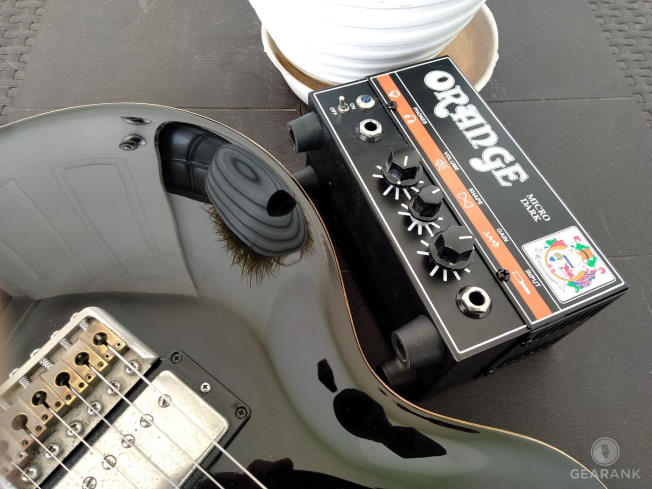
The "Shape" knob is a combination of an EQ and a contour control (as seen on some Marshall amps) that shifts the tone from dark to bright. If it starts getting too dull at low volumes, raise the shape control to brighten it up a bit. If it's too harsh at high volume, turn it down and get a little more roundness back as well as some lower midrange thump. Very intuitive.
The headphone output is probably its weakest link. I'm not quite sure if this is a cab emulated output but it's nowhere as good as a miked tone. It might be useful for late night practicing if you have no other alternatives though.
All in all, the Orange Micro Dark is one of the best value purchases I've ever made. It's a fun piece of gear that I use a lot for both rehearsals and recordings and has the potential to be a main amp for smaller gigs with less overall stage volume. It has a very satisfying gain range as well as a great approximation of the tube feel often found on its larger sibling, the Dark Terror.
Specifications
- Power: 20W
- Preamp Tubes: 1 x 12AX7
- Effects: None
- Input: 1 x 1/4"
- Outputs: 1 x 1/4" 8 Ohm Output, 1 x 1/4" Headphones
- Weight: 1.72 lbs.
| Website | Source | *Rating Value |
| Gearank | Raphael Pulgar | 94/100 |
| Guitar | Richard Purvis | 80/100 |
Demo

#5. Boss
Boss is well known for producing reliable and good sounding guitar effects, many of which continue to serve popular guitarists like Eric Johnson, Steve Vai, Marty Friedman and many more. Being a big player in one market doesn't always translate to success in another, but Boss' foray into the guitar amplifier market is proving to be quite successful, as evidenced by the consistently favorable ratings that most of their amplifiers are getting. To be specific, we are talking about the Boss Katana range of amplifiers, which combine Roland's (Boss' parent company) experience in amp building with Boss reputation for quality and reliability.
Boss Katana-100 MkII
Cons
- Complex controls
Pros
- Built-in Power Attenuation
- Tube-like response
- High quality digital effects
- Solid build quality
Other Top Boss Amps
The smaller combo Boss Katana-50 MkII is one of the top rated amps under $300 and the Boss Katana Head MkII is perfect for those with their own cabinets.
The Katana-100 MkII combines good sound, sensible flexibility, practical controls, and dependability, resulting in a truly gig worthy combo amplifier.
It utilizes Tube Logic technology, which simulates the components of tube amps instead of merely reproducing its tone, resulting in improved realism.
While other amps offer tons of amp models, the Katana-100 MkII focuses its resources on producing tube-like tones with fewer amp models that include Clean, Crunch, Lead, Brown and Acoustic. The MkII edition adds a variation button that provides a different flavor for each model, resulting in a total of 10 voicings.
In addition to amp modeling, it runs up to 5 digital effects from a selection of 60 that are directly taken from Boss' popular guitar processors.
It also has Variable Power Control, which allows for cranked tones at lower volumes by attenuating the power to 50W or down to 0.5W.
And it addresses modern home recording connectivity needs with its USB recording output that comes with speaker emulation.
Given that this is a 100W amp with a 12" speaker, this is not ideal for those who are looking for something easily portable. And all these features require increased control complexity, which is especially obvious when utilizing the software editor.
Still, with its incredible versatility, the Boss Katana-100 MkII is a true all-in-one amplifier that you can use for practice, recording and for stage performance.
Specifications
- Power: 100W with Power Attenuation (50W, 0.5W)
- Speaker: 1 x 12"
- Amp Modeling: Clean, Crunch, Lead, Brown, Acoustic
- Effects: 60 Boss Effects
- Input: 1 x 1/4" (Guitar), 1 x 1/4" (Power Amp), 1 x 1/8" (Aux)
- Outputs: 1 x 1/4" (Line), 1 x 1/4" (Headphones/Rec)
- Weight: 32.6 lbs.
| Website | Source | *Rating Value |
| Guitar.com | Richard Purvis | 80/100 |
| Guitar World | Daryl Robertson | 90/100 |
Demo

#6. Yamaha
Established over a century ago as a piano and reed organ builder, Yamaha has since expanded into building other musical equipment. While they are not primarily known as a guitar amp manufacturer, Yamaha's extensive reach and resources give them an almost unfair advantage over the competition, as exemplified by the success of their THR I and II lines of desktop guitar amplifiers. This line of portable amps combines Yamaha's penchant for student friendly features and modern studio functions that many guitarists appreciate, ultimately securing Yamaha a spot on this list.
Yamaha THR30II Wireless
Cons
- Not a stage amp
- Limited to low-volume personal use
Pros
- Innovative studio-friendly profile
- Versatile Amp modeling and Effects
- Wireless convenience
- Direct Recording for different types of instruments
Other Top Yamaha Amps
The THR10II is a lower power and cheaper version featured in our Best Practice Amps amp guide. Another highly rated option from Yamaha is their portable tabletop style acoustic amp, THR5A, which can be powered by batteries.
Yamaha looked at the changing market and developed an amp that addresses the needs of modern day musicians - that is to have a guitar amp that will fit nicely into their computer based home recording setup. And that is exactly what the THR30II Wireless is all about, a desktop friendly amp with digital sound processing, direct recording and wireless compatibility.
Since it is not meant to be set on the floor, the THR30II makes parameter changes easier right on a desk, and more importantly, the speakers are more in-line to the usual listening position. This is in no way meant to be a stage amp with its 2 x 3.5" speakers, but it does have quite the power with its 30 Watt rating.
It didn't go overboard with amp modeling, rather it sticks to essentials with 15 guitar amp models that cover most of the popular tones. It also has other amp models that make it viable as a multi-purpose studio amp, including 3 bass amp models, 3 mic models and a flat mode. It also has built-in effects like reverb, delay and different types of modulation.
While it can't compete with stage amps when it comes to "moving air", it has created its own market niche and continues to be successful at it - it really showcases Yamaha's creativity and innovation. Speaking of innovation, the THR30II is a true wireless capable amp with its integrated Line 6 wireless receiver, Bluetooth compatibility and built-in rechargeable battery.
The Yamaha THR30II is the one to get if you're looking for a versatile and convenient amp for home recording and practice use.
Specifications
- Power: 30W
- Speaker: 2x3.5"
- Amp Modeling: 15 x Amp Models
- Effects: Chorus, Flanger, Phaser, Tremolo, Echo, Compressor, Noise Gate, Reverb
- Input: 1 x 1/4", 1 x 1/8" (Aux in)
- Outputs: 2 x 1/4" (Line Out)
- Weight: 9.48 lbs.
| Website | Source | *Rating Value |
| Wired | Parker Hall | 90/100 |
| MusicRadar | Editor | 90/100 |
| Guitar World | Simon Fellows | 100/100 |
Demo

#7. Monoprice
Monoprice is a company that has a wide selection of affordable audio related gear. They may not have the recall and artist endorsements of big name brands, but they know how to give the competition a run for their money. The quality of their tube amps generate much of the buzz surrounding the brand, even experienced musicians can't help but be impressed at the value offered by affordable Monoprice tube amps like the one featured below.
Monoprice Stage Right 611815
Cons
- Can get muddy when driven hard
- Not for modern high-gain use
Pros
- Great value amp with genuine tube circuitry
- Vintage tone and feel, great for blues and rock
- Comes with 12" Celestion Red Truvox 1215
- Works well with pedals
Other Top Monoprice Amps
True to their reputation for affordability, the Monoprice 611720 secured a spot in our best affordable guitar amps guide. We also recommend the smaller Monoprice 611705 as a good budget friendly option for those who are looking for good quality compact tube amps.
Monoprice is an amp brand that has made owning quality tube amps more accessible. And of their line up, the Stage Right 611815 is their highest rated offering, mostly because of its old school circuitry and tone.
Unlike other affordable amps that go for hybrid (tube preamp with solid-state poweramp), this one utilizes genuine tubes on both ends, including three ECC83 tubes in the peamp and two EL84 power amp tubes. This configuration is similar to what classic low-watt tube amps use, and as such it sounds similar to popular tube amps that are priced much higher.
Speaking of sound, this amp has a vintage voicing with nice break up, and it also responds well to dynamic playing. This makes it ideal for blues and rock styles. Note that it can produce decent clean tone, but some may not like the slight breakup. Also it can get muddy when driven hard, so best to use a pedal if you want tight high-gain tones.
It also doesn't skimp on controls, with its 3-band EQ and it even comes with built-in spring reverb which can evoke '60s style surf rock tones. Another cool thing about this amp is that it doesn't come with a generic speaker, rather it is equipped with a 12" Celestion Red Truvox 1215.
Given the price, don't expect the included tubes to be of top tier quality, but they do get the job done. If you encounter Tube Buzz, you can get better results by swapping the tubes out.
If you're looking for a compact and friendly looking tube amp, then this is a great fit.
Specifications
- Power Rating: 15-Watts (Switchable to 1-Watt)
- Preamp Tube(s): 3 x ECC83/12AX7
- Poweramp Tube(s): 2 x EL84
- Speaker: 1x12” Celestion Red Truvox 1215
- Cabinet: Rear Ported
- Controls: Gain, Volume, Tone, Bass, Middle, Treble, Reverb, 15W/1W Switch
- Input(s): Normal, FX Return
- Output(s): FX Send/Line Out, External Speaker
- Weight: 31.6 lbs
- Suitable for: Clean, Blues, Rock
| Website | Source | *Rating Value |
| Festival Peak | Christian A. Pfeiffer | 88/100 |
| YouTube | 60 Cycle Hum | 97/100 |
Demo

#8. PRS
Compared to other big name brands, PRS is a relatively young company, founded in 1985. But that didn't stop Paul Reed Smith and his company from rising to be one of the most well-known guitar manufacturers. PRS has since branched out into the amplifier market, and they did so with much success, thanks to their consistently high quality standards. They don't have a big line up of amps like what others offer, but the few ones in their lineup are often met with acclaim, usually aimed at gigging musicians who want premium build quality and tone.
PRS Mark Tremonti Signature MT 15
Cons
- Limited to artist preferred high-gain voicing
- Pricier than similar lunch box style amps
Pros
- Great sounding tube driven high gain tones
- Expanded tone shaping controls
- Impeccable build quality and aesthetics
- Built-in power attenuator
Other Top PRS Amps
The following contains advertising links that will take you to Sweetwater: PRS also caters to fans of high-end vintage voiced tube amps with the PRS DG 30 David Grissom, a 30-Watt tube amp head. Another well received amp in their line up is the PRS HDRX 20, a 20-Watt tube amp head inspired by Jimi Hendrix's popular Woodstock tone.
The PRS Mark Tremonti MT15 follows much of the design principles and build quality standards that the company applies to their guitars. As such, everything about this compact 15 watt amp looks and feels as premium as their instruments.
As the name implies, the MT15 caters to the needs of Mark Tremonti, guitarist of Alterbridge and Creed. It is essentially a compact low-watt version of his main amps, which are Bogner Ubershalls and Rectifiers. This small amp houses six JJ ECC83S preamp tubes for a lot of gain, and two JJ 5881 (similar to 6L6) power amp tubes. It is more than capable of providing cranked high-gain tones, but in a more portable profile and at manageable volume levels.
PRS made sure that the MT15 is not limited to just high-gain, so they equipped this amp with a nice sounding clean channel with its own clean boost. This means that you can setup the amp to give you 3 different tones, clean, mid-gain and lead, and switch as you prefer.
For a compact 15W lunchbox amp, the MT15 houses expanded control options which include dedicated 3-band EQ, master presence knob, external bias control, and power attenuation (full/half). It also comes with an effects loop to better support complex pedalboards. It would've been nice if it had more voicing options, but it's not really trying to be a modeling amp.
It goes without saying that build quality and overall appearance is top notch, so people can easily tell that you spent a bit more on this fancy looking lunch box amp.
If you're looking for a premium quality yet portable high-gain amp, then this is for you.
Specifications
- Power Rating: 15W (7W setting)
- Preamp Tube(s): 6 x JJ ECC83S
- Poweramp Tube(s): 2 x JJ 5881
- Controls: Master, Presence, Clean (bass, mid, treble), lead (bass, mid treble)
- Input(s): 1 x 1/4"
- Output(s): 2 x 1/4" (8 ohms parallel), 1 x 1/4" (16 ohm)
- Misc: Effects Loop, 1 x 1/4" Footswitch (channel gain/clean), External bias jacks and bias adjustment, Pull clean channel treble for boost
- Weight: 17.8 lbs.
| Website | Source | *Rating Value |
| Premier Guitar | Dave Hunter | 90/100 |
| Music Radar | Nick Guppy | 90/100 |
| MusicPlayers.com | Matt Abrams | 87.5/100 |
Demo

#9. Roland
Roland has come a long way from its humble beginnings back in the early '70s as a rhythm machine manufacturer. The company grew to produce various other instruments and amplifiers, and is now one of the biggest music gear manufacturers in the world. One of their most popular amplifier lines is the Roland Jazz Chorus, as used by artists like Albert King, Andy Summers, Metallica's James Hetfield and Kirk Hammett, Robert Smith of The Cure, Jeff Buckley and many more. These days they have a variety of amplifiers in the entry to mid-tier market, most of which continue to garner great reviews.
Roland JC-22
Cons
- Limited to clean amp voicing
- Not loud enough for band use
Pros
- Great sounding clean tone
- Superb stereo chorus effect
- Stereo input and stereo speakers
- Reliable and Durable
Other Top Roland Amps
Although it didn't contribute to Roland's ranking in this guide due to it being priced over $1000, their flagship amp is the JC-120 Jazz Chorus, a highly sought after solid state amp. They also have make one of the highest rated acoustic guitar amps from $500 to $1000 with the Roland AC-60.
Roland Jazz Chorus amps are considered standard issue when it comes to clean tone, used by many big name artists, including Jeff Buckley, Albert King, Andy Summers and more. You've probably heard them in songs of different genres, from pop to blues and even rock.
The JC-22 takes the iconic clean tone and stereo chorus effect of its namesake, and packs it into a compact 30W amp that's ideal for home use. Like its bigger siblings, it comes with two speakers to achieve Roland's famous Dimensional Space Chorus sound, albeit using smaller 6.5" woofers.
This means that it has good enough headroom for practice and home recording, but can be overwhelmed by loud drummers in a band setting. Like other JC amps, there are no amp models and voicings to play with, so those who want to sonic flexibility will have to look elsewhere.
Complementing its dual speaker configuration is the amps stereo reverb. It also comes with stereo input and stereo effects loop to better utilize the stereo speakers, this makes the JC-22 compatible with complex stereo guitar rigs.
Build quality and material used are top notch, this small amp is as reliable and durable as its bigger siblings. Get the Roland JC-22 if you're looking for a small home friendly amp with great sounding clean tones.
Specifications
- Power: 30W
- Speaker: 2x6.5"
- Effects: Stereo Chorus, Stereo Reverb
- Input: 2 x 1/4" (Stereo Input)
- Outputs: 2 x 1/4" (Stereo Line out)
- Weight: 26.5 lbs.
| Website | Source | *Rating Value |
| Vintage Guitar | Oscar Jordan | 92/100 |
| Jake Wildwood | Jake Wildwood | 90/100 |
Demo

#10. Fender
Fender has a long history of building amplifiers, so much so that many of the amps we see today still mimic the look and aesthetics of the amps that they built many decades ago. You could also say that many of the amps we have today can trace their roots to the classic Fender amp design. Also impressive is the long list of Fender amp users which include Eric Clapton, Jerry Garcia, Brian Setzer, Neil Young, Stevie Ray Vaughn, Eddie Van Halen and many more. For a company with a long legacy and a massive line up of amplifiers, maintaining high ratings across the board is quite the feat, but then again, this is to be expected from the company that helped shape the electric guitar sound that we know today. These days, Fender is well represented in the entire amplifier market, from entry level models with amp modeling, to premium modern reproductions of their iconic tube amps.
Fender Tone Master Deluxe Reverb
Cons
- Limited to one voicing
- A bit pricey given its simple functionality
Pros
- Great sounding Deluxe Reverb tone
- Lightweight alternative to heavy tube amps
- Built-in power attenuator
- Easy to use and responsive controls
Other Top Fender Amps
At publication time the Tone Master Twin Reverb was one of the top rated solid state amps, the ’57 Custom Champ was a top rated tube amp. At the time of publishing, the Mustang LT25 was the highest rated combo amp under $200.
Instead of utilizing digital sound processing to have multiple amp models like their Mustang line of amps, the Fender Tone Master Deluxe Reverb focuses all its DSP to replicate the tone of its name sake.
Given the iconic status of the original Deluxe Reverb amp, this modern solid-state recreation has big shoes to fill, yet it does the job really well. It replicates the tone and response of the original, and it even mimics how each of the control knobs affect the overall tone. To complete the vibe, it also comes with the same old school aesthetics. Even the original's sound pressure level is replicated with its 100W amp and 12" Jensen N12K speaker.
Going beyond being a straightforward replica, this amp comes with a variable power attenuator that can lower the rating down to 0.2 Watts, a feature that makes it viable for both stage and practice use.
More importantly, it does all this without the maintenance requirements and extra weight that are associated with vintage tube amps. It simply provides reliable and consistently great sounding tone while being light enough for actual gigging.
As designed, there is no other amp voices to play with, which makes the premium price tag a bit off putting. This also means that those who are looking for multiple amp models and effects will have to look elsewhere.
Specifications
- Power: 100W (Variable down to 0.2W)
- Speaker: 1 x 12" Jensen N-12K Neo
- Amp Models: Vintage Deluxe Reverb
- Effects: Reverb and Tremolo
- Input: 2 x 1/4", 2 x 1/4" (Vibrato Channel)
- Outputs: 1 x XLR (DI out)
- Weight: 23 lbs.
| Website | Source | *Rating Value |
| Premier Guitar | Charles Saufley | 90/100 |
| Guitar Mag | Ed Oleszko | 90/100 |
| Guitar World | Nick Guppy | 90/100 |
Demo
Things to Consider When Buying a Guitar Amplifier
-
Straight off the bat, a consideration for most, is cost of the item. If you are stretching yourself beyond what you should, you may want to consider the best guitar amps under 500. However, if this is your price point consider the following points before deciding the best guitar amp under 1000.
Tube vs Solid-State
- Tube technology is very much alive in today's digital age, even with amp modeling inching closer and closer, there's just no replacing the warmth and organic response of tube amps, especially when recording. Still, there are practical drawbacks with this old technology, like requiring more maintenance work and handling care, mostly due to the fragile nature of tubes. Weight and cost of tubes also make them somewhat impractical, unless of course you have a team of roadies that can carry and maintain your tube amps for you.
Solid-state amps on the other hand have fewer parts to worry about, and are generally considered to be more sturdy and reliable. They are also usually paired with either digital or analog based amp modeling, which allows for a wider selection of tones, albeit without the x-factor that tube adds to amps. Because of this, there are some manufacturers who combine both tube and solid state circuitry in one amp, but at the end of the day, these hybrid amps will require the same handling care and maintenance as a regular tube amp. For this reason, some have chosen to get the best of both worlds by having one of each - utilizing tube amps for recording, and solid state amps for live performances.
Amp Modeling
- Amp modeling is a polarizing topic for some guitarists, but it shouldn't be because the alternative is still widely available. If you feel that amp modeling will just be a distraction then go for a straightforward amplifier. For those who do appreciate the versatility that they offer, there are now many options on the market, from the usual digital recreations of popular amps, to those with analog based amp voicing approximations, some even feature digital emulations of actual amp components, which allow you to further customize your digital amp.
Combo vs Amp Heads
- Combo amps come with a speaker built into the amplifier cabinet, making them heavier but more convenient. On the other hand, amp heads are lighter because they don't come with a speaker built-in. The amp head configuration allows you to freely choose the type of speaker and speaker cabinet that you prefer, with the complication of ensuring amp and speaker compatibility. Interestingly, there are now some amplifier heads that come with built-in speakers that are only good for practice, making them technically a combo amp, but that's another story in itself.
Power rating & Speaker Size
- Without going into technical details, the amp's power rating is directly correlated to its loudness. This means that the higher the power rating is, the louder the amp can go. But loud is not always better, especially when considering space and noise level restrictions, this is why even those guitarists with big wall of amps usually also have a humble practice amp to play quietly with. Low power amps also let you crank the gain at lower volumes, so you can get to your amp's sweet spot without being a noise nuisance. Thankfully, some big amps now come with built-in power attenuators, which give you the option to lower the power rating when needed. Also note that many tube amps are louder than similarly rated solid-state amplifiers.
Another important factor to consider is speaker size, which impacts overall loudness and tonality. Bigger speakers can push more air and have more low end, while smaller speakers have limited pushing power, while emphasizing the mid frequencies. In addition to size, different speaker models and cabinet types also introduce subtle differences to the overall sound. To better fit into home studio setups, some manufacturers have been offering compact tabletop style amplifiers, and these continue to be popular to this day.
Built-in Effects
- Reverb is still the most commonly installed effect in amps, but there are some amplifiers that go overboard, to the point that they outdo even multi-effects units. Unfortunately, even those with the most number of effects allow for limited simultaneous use, so no, you can't put 10 virtual pedals together in your practice amp. Also don't expect the quality of built-in effects to match that of boutique pedals, but they can be a great addition to an amp if used sparingly and for appropriate songs.
Connectivity
- In addition to the 1/4" input for your guitar, you may want to consider amps with better connectivity features like those with built-in USB output for direct recording, footswitch input, aux input for jamming with tracks, headphone output for quiet practice, and a DI output for getting your sound straight to a PA system. Speaking of headphone out, there are some amps that come with built-in speaker cabinet simulated outputs, this subtly changes the resulting sound much like the amp cabinet would without having to actually use the speaker. There are also a number of newer guitar amplifiers that come with Bluetooth connectivity for streaming audio and for software control.
Portability
- Among the most common rookie amp buyer mistakes is buying a big amp that's too heavy to gig with, or going the opposite and buying one that's too small. If you're gigging at different places and you don't have a roadie, then consider going with a smaller amp that has DI output so you can go straight to PA with your tone intact. In big venues where big amps are a must, some opt for amp heads because the separated head and speaker cabinet are lighter on their own, although you'll have to move more pieces.
Best Guitar Amp Under 1000 by Brand Selection Methodology
The first edition was published in 2018.
We began the process by creating a 'short-list' of brands that have amps selling in the sub $1000 price range with amps that have strong enough ratings to be short-listed for any of our other electric guitar amp guides.
Regardless of the full range of amp types provided by the brands included, only electric guitar amps priced under $1000 were included in the data set used to calculate the 10 highest rated brands.
We chose this approach with the price limit to make this guide relevant for newer guitarists as opposed to more experienced players that already have a good idea of which brands they prefer. The effect was that great but expensive brands like Kemper and Mesa/Boogie were excluded.
Here are the 43 brands that we short-listed: Acoustic Amplification, Ashdown, Blackstar, Boss, Bugera, Danelectro, Donner, DV Mark, Egnater, Electro-Harmonix, EVH, Fender, Fluid Audio, Friedman, Hotone, Hughes & Kettner, Ibanez, ISP Technologies, Joyo, Laney, Line 6, Marshall, Monoprice, Mooer, NUX, Orange, Peavey, Pignose, Positive Grid, PRS, Quilter Labs, Randall, Rockville, Rogue, Roland, Sawtooth, Seymour Duncan, Supro, Valeton, VHT, Vox, Yamaha, ZT Amplifiers.
We then updated our ratings for all qualifying amps and used those data to produce an average rating for each brand. We then selected the 10 highest rated brands to present above. Just over 113,500 review and rating sources were analyzed during this process.
For more information about our methods and how we produce our ratings, please read How Gearank Works.
About the Author and Contributors
Here are the key people and sources involved in this guide's production - click on linked names for information about their music industry backgrounds.
Lead Author & Researcher
Alexander Briones
I have been writing about and researching music gear for many years, all while serving as a music director at my local church. I engage in guitar playing and singer-songwriter stints, in addition to mentoring young musicians and teaching guitar and bass.
I am of the opinion that I sound like myself regardless of the amp I use, but given a choice, I’d usually go for Fender amps. They seem to fit my playing style better. I love their clarity and transparency for plug-and-play setups, and they are great platforms for pedals.
Contributors
Daniel Barnett: Positive Grid Spark Review.
Raphael Pulgar: Orange Micro Dark Review.
Jason Horton: Editing and Illustrating.
Media
Main/Top Image: By Gearank.com compiled using logos of guitar amplifier brands that appear in the Top 10 list above.
The videos have been embedded in accordance with YouTube's Terms of Service.
The individual product images were sourced from websites, promotional materials or supporting documentation provided by their respective manufacturers expect for the additional Positive Grid Spark photo taken by Daniel Barnett and the additional Orange Micro Dark photo taken by Raphael Pulgar.



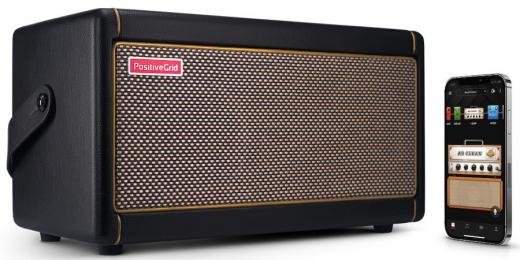
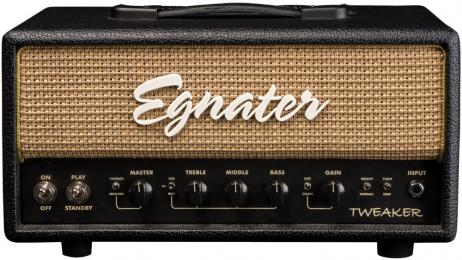
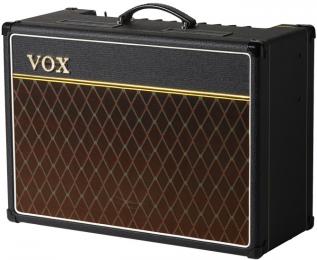
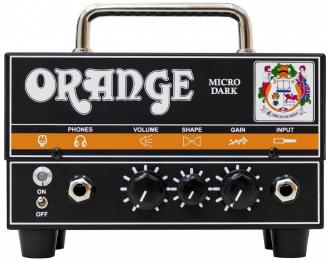
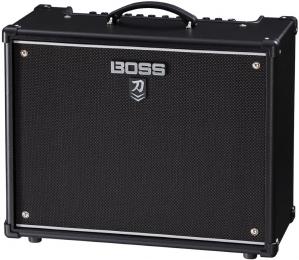
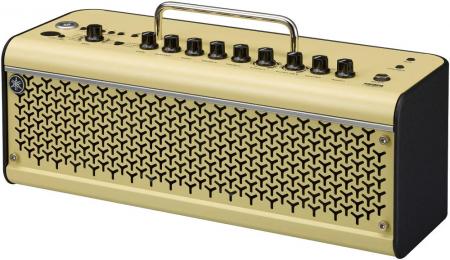
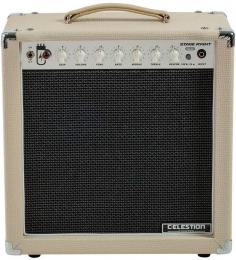
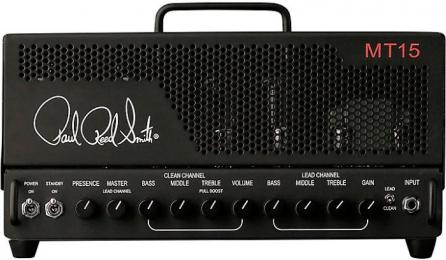
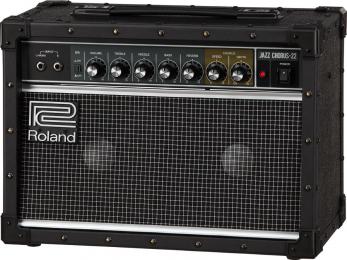
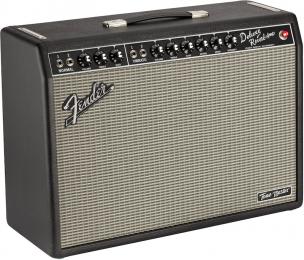
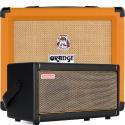
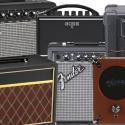
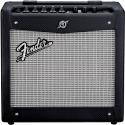
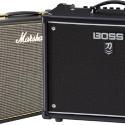
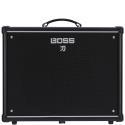
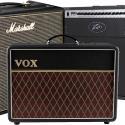
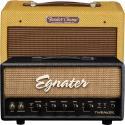 The Best Small / Low Watt Tube Amps - Combo & Amp Heads
The Best Small / Low Watt Tube Amps - Combo & Amp Heads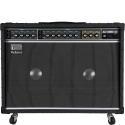
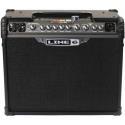
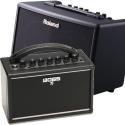
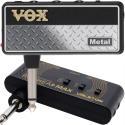
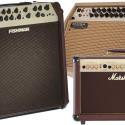





Comments
Hi! Your article “The Best
Submitted by emma avery (not verified) on
Hi! Your article “The Best Guitar Amp from the Top 10 Brands Under $1000” is very helpful for. After reading your article I got a lot of knowledge from your article. My name is Emma Avery I’m also researching on the Amplifiers. Thank you for sharing information.
No Mesa Boogie? This list is
Submitted by James E Slagle (not verified) on
No Mesa Boogie? This list is for amateurs.
As mentioned in the
Submitted by Jason Horton on
As mentioned in the Methodology Section above, our analysis was based on amps selling for under $1000, and because most Mesa Boogie amps are priced above that they aren't featured in this list.